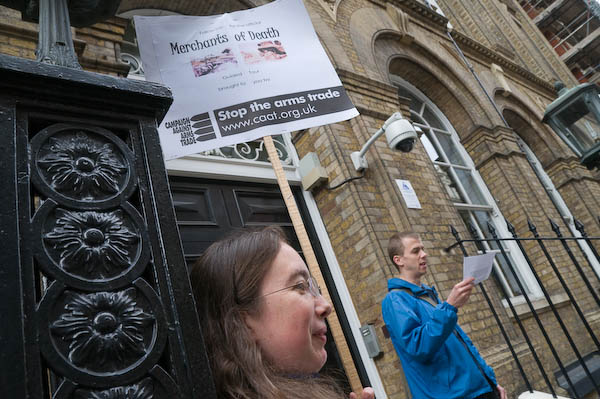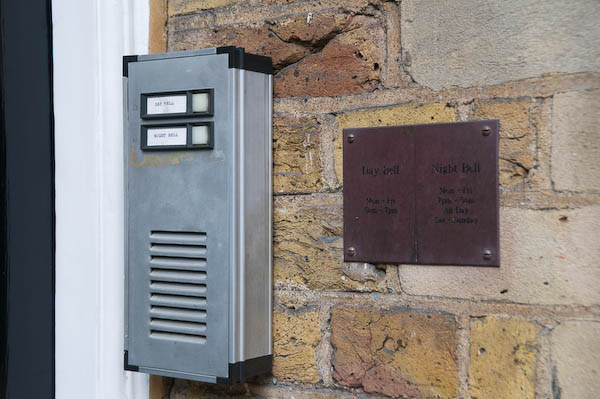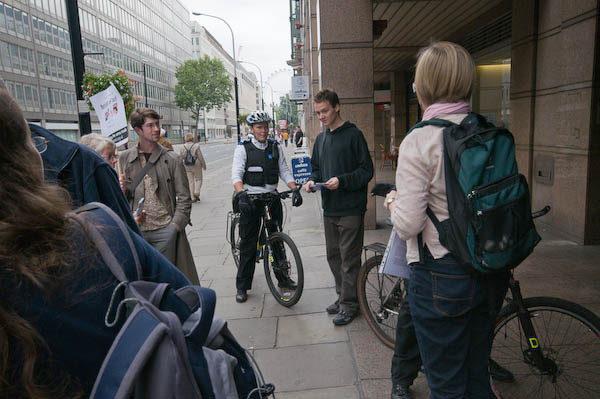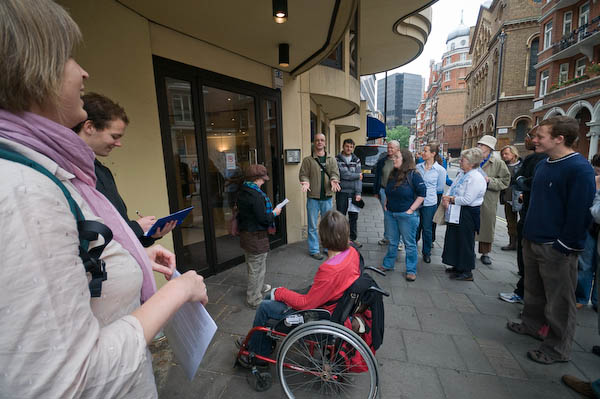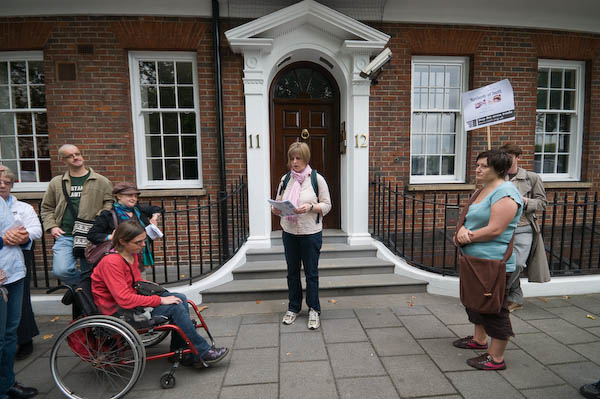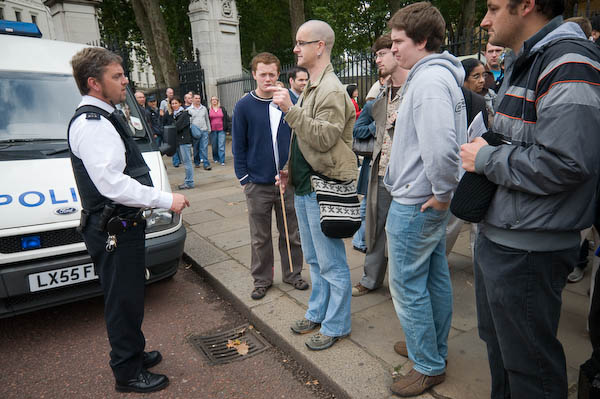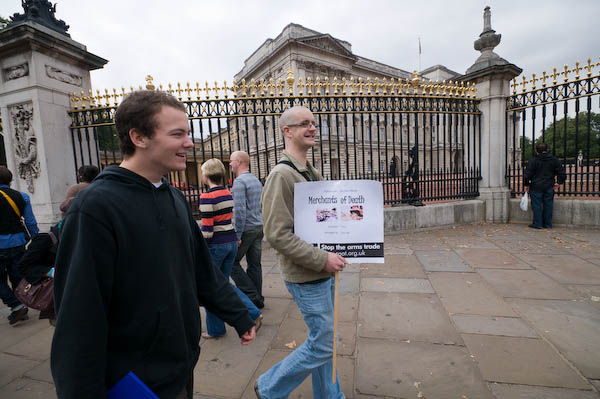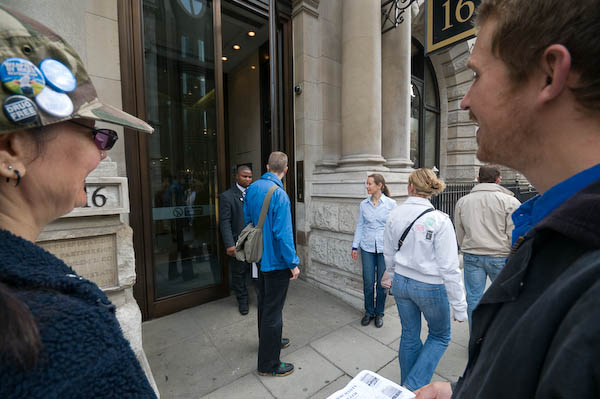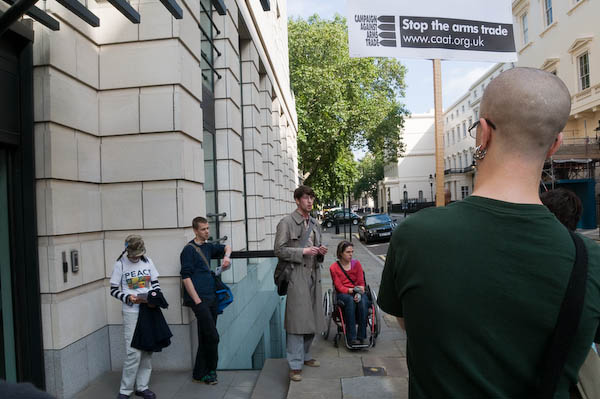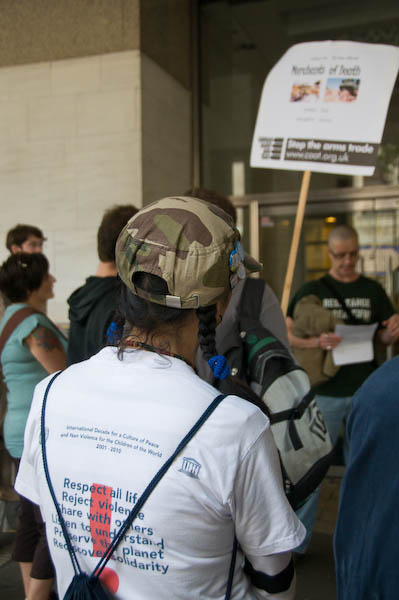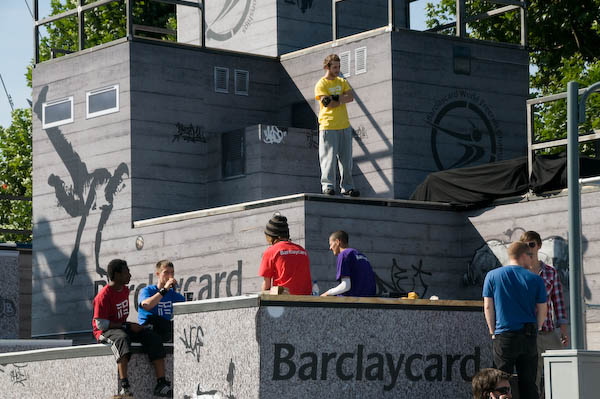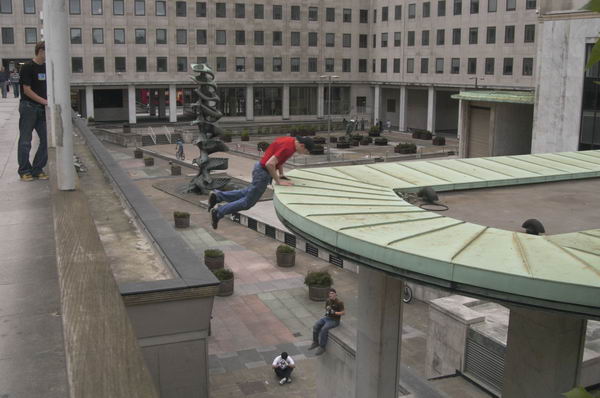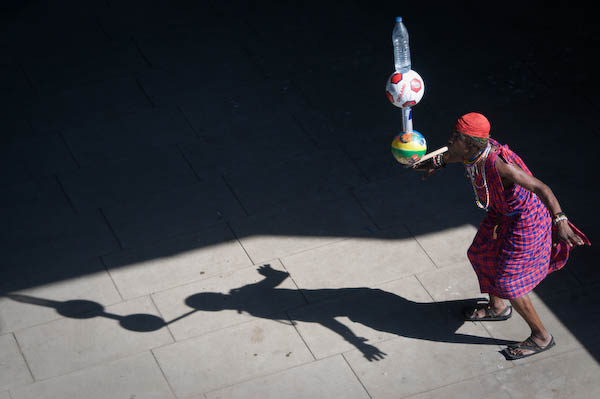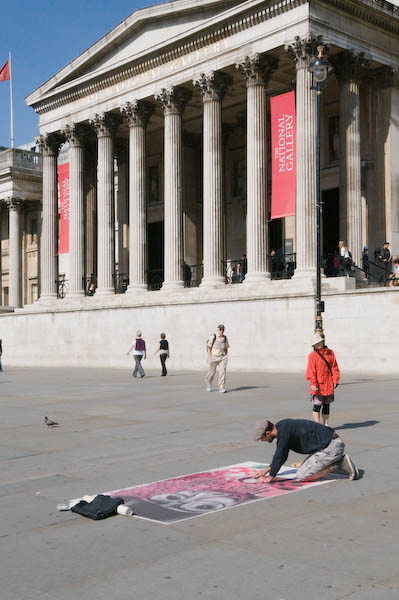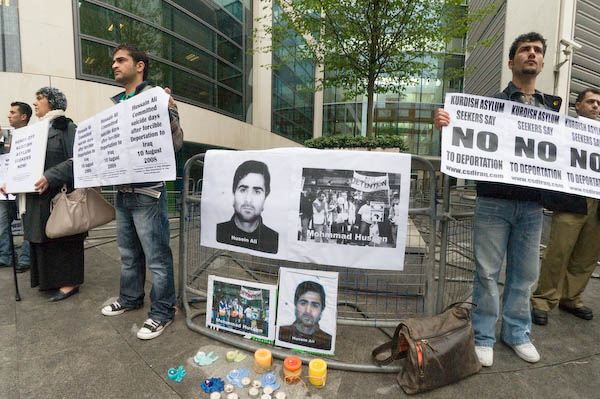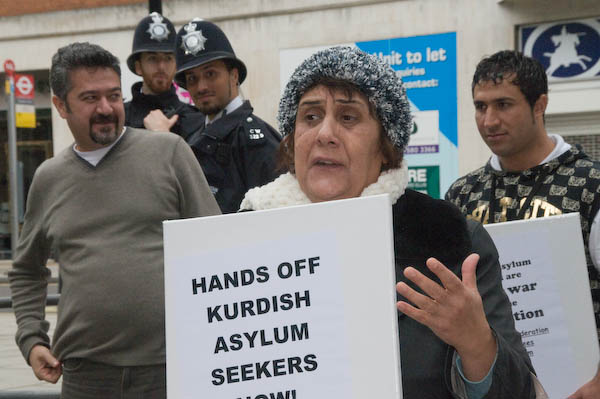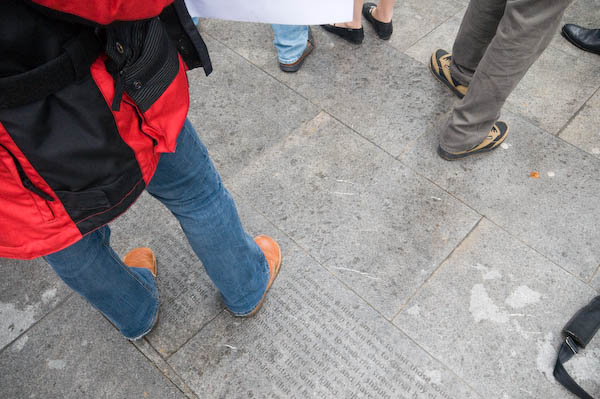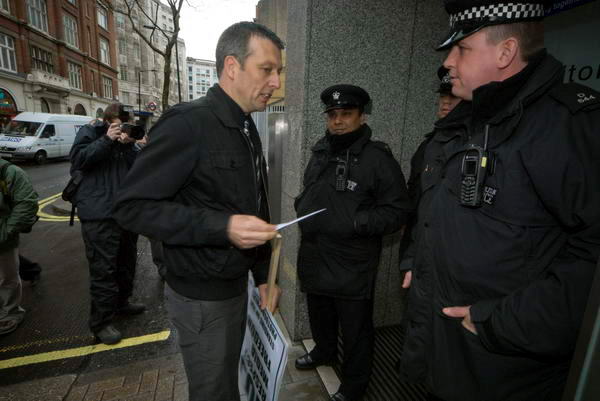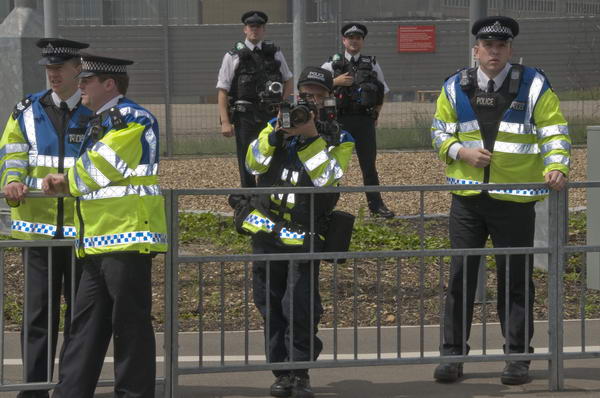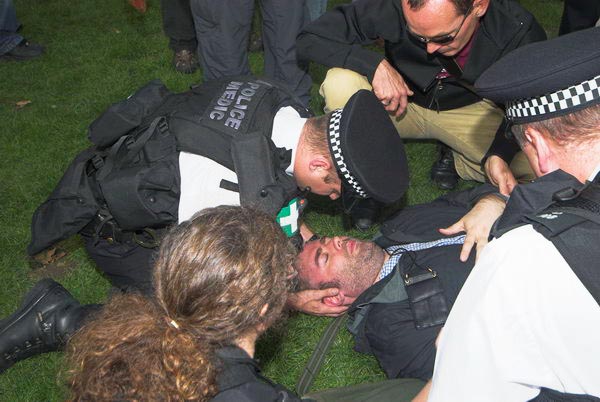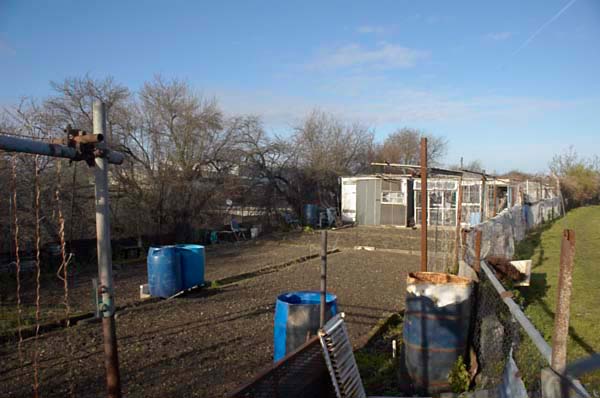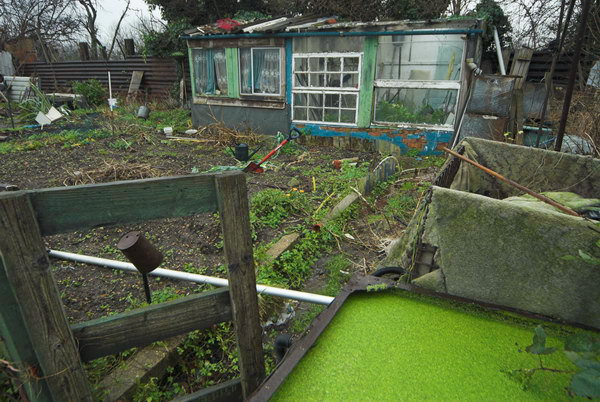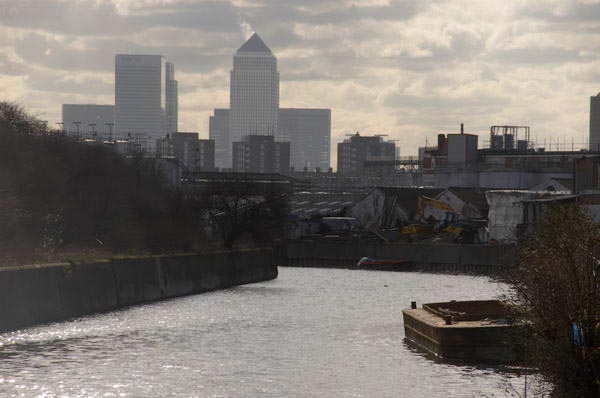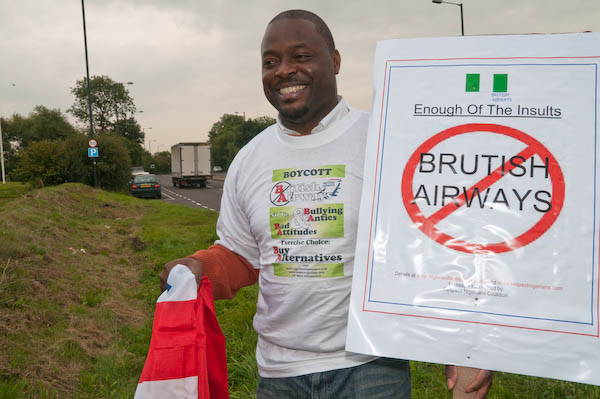
Protester outside BA’s Waterside HQ near Heathrow
Ayodeji Omatode, an IT consultant living in Kent, boarded a British Airways flight at Heathrow on March 27, 2008, going home to Lagos for his brother’s wedding. Along with other passengers he was appalled at the maltreatment of a Nigerian man being forcibly deported on the flight and he made his views clear.
BA employees called the police to deal with Mr Omatode, and more than 20 officers boarded the plane and dragged him off; he was handled roughly, thrown against a wall and then into a police van, arrested and held for eight hours. BA banned him from flying with them, didn’t return his fare and only gave him his luggage back a week later – damaged.
Over 130 Nigerians and some other nationals were ordered off Flight BA075 to allow a single man to be deported against his will to Nigeria, surely making it one of the most expensive operations of its kind. According to a report in ‘The Guardian‘, the Nigerian government has received an apology about the incident from the British High Commissioner to Nigeria, with a promise that the British government would ensure such an event did not happen again.
Despite this, the CPS have decided to go ahead with the prosecution of Mr Omotade on a charge of threatening behaviour towards a member of the aircraft crew. The case was due to be heard at Uxbridge Magistrates Court on 18 September, but has now been postponed.
The Respect Nigerians Coalition has demanded that they make a full apology to the 134 Nigerian passengers who were offloaded, and give an apology and appropriate compensation to Mr Omatode. They also ask BA to withdraw the statements made by their employees to the police about him, and to remove the ban on him flying with BA. Finally they have asked for an undertaking that BA will improve its attitude to customers and stop practices that make it appear “arrogant, uncaring and discriminatory.”
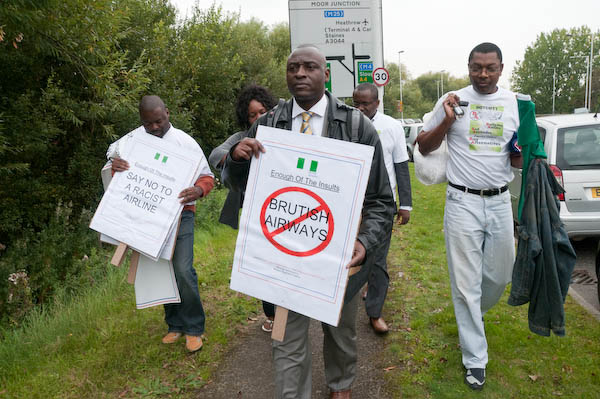
Protesters arrive at Waterside
The Respect Nigerians Coalition have called on “all decent people everywhere” to join them in a boycott of BA until the company meets these demands. They got considerable publicity when the picketed the BA AGM earlier this year and a small group of protesters came to the Harmondsworth HQ of BA at lunchtime on Wednesday 17 Sept. They were not allowed on to the BA site at Waterside but set up on the main road just outside the offices.
It looks to me like time for BA to withdraw with as much grace as they can scrape together, but so far they have failed to do so.
Our government has let the right-wing press dictate our immigration policy. Most of the time it’s sheet inhumanity and the misery, suffering and illtreatment it causes are hidden, happening out of mind and sight in places few of us go. When they see it happening, decent people are rightly appalled. Those who act as good neighbours should and protest should be applauded, not persecuted.
More pictures on My London Diary.
